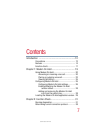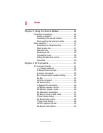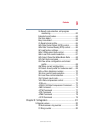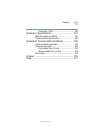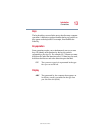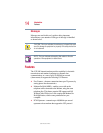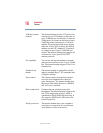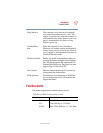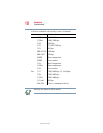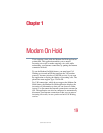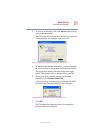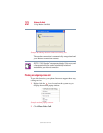
15
Introduction
Features
5.375 x 8.375 ver 2.4.0
❖ Data Compression—increases transmission speeds using the
new V.44 compression algorithm, which is optimized for
World Wide Web browsing. The modem also supports MNP5
and V.42bis data compression protocols.
The internal modem has a modem port (RJ11) for connecting to an
analog telephone line.
CAUTION: Connect the internal modem ONLY to an analog line,
not to a digital line. For more information, see “Connection
procedures” on page 44.
Due to FCC limitations, speeds of 53 kbps are the maximum
permissible transmission rates during downloads. Actual data
transmission speeds will vary depending on line conditions. Many
users will experience throughput in the range of 32 to 44 kbps
under normal conditions, depending on telephone line quality.
To achieve a V.92 56K connection, both your modem and the host
modem (typically at an ISP) must be V.92 56K modems. As many
ISPs do not yet support the V.92 protocol, most connections will
be V.90 56K connections.
V.92 connections also require a phone line that supports the V.92
protocol. Some phone lines will not support V.92 or V.90 56K
connections at all, either because of quality impairments or
additional analog-to-digital conversions (for example, PBX
systems).
When a PCM upstream connection is not possible, the modem
automatically uses the default V.34 protocol for “upstream” data
transmission, which supports connection rates of up to 33,600 bits/
second.



